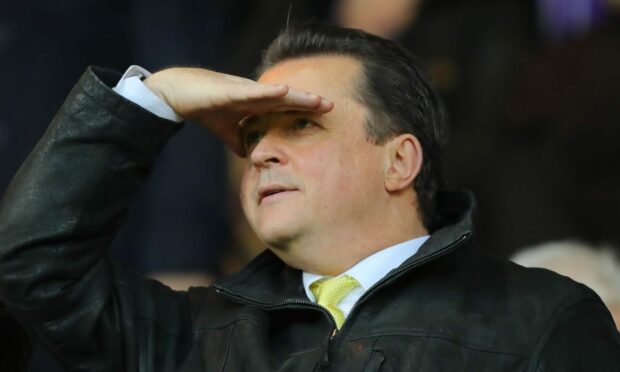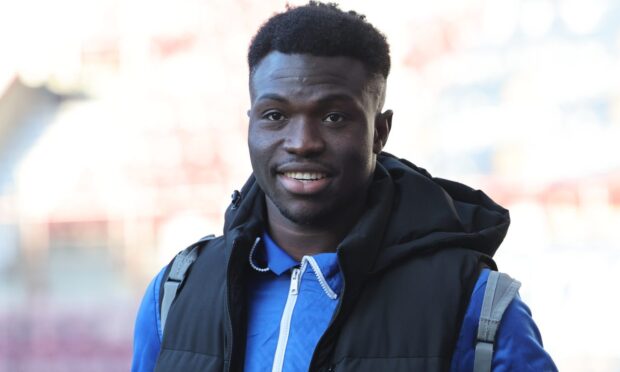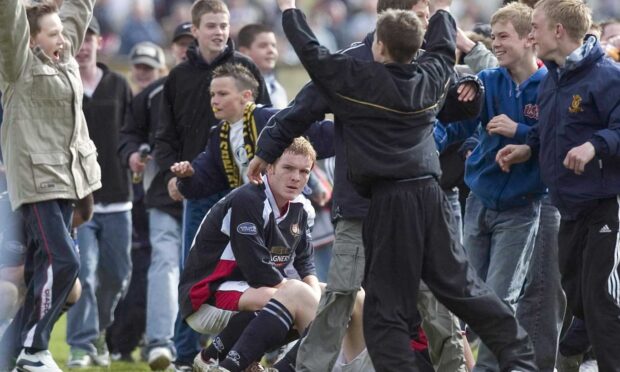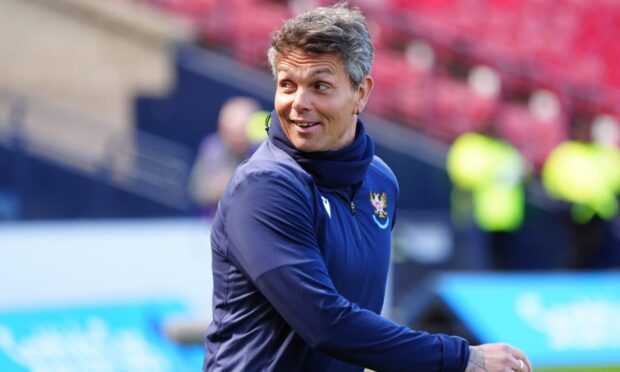Jez Moxey is a well-known figure in the football world.
Now that he’s given his first interview outlining his role in overseeing the sale of St Johnstone, he’s certainly going to be a very important one in the world of Perth supporters.
Courier Sport looks into Moxey’s career so far to provide a deeper insight.
A different ball game
Moxey’s first involvement in sports adminstration wasn’t football.
It was the game he played as a boy, basketball.
Back in 1989 he was hired by David Murray as general manager of the Rangers basketball franchise.
Murray was starting out at Ibrox and fancied the idea of buying a team to compete in the British league.
The General Manager of the successful Rangers Basketball Franchise in 1989 is now CEO of Wolves-Jez Moxey (far right) pic.twitter.com/qvijE6sGzU
— Rangers History (@RangersFACTS) January 4, 2015
The experiment didn’t last long – mainly as a result of small crowds – despite the fact Rangers were league champions in their one and only season.
A career in football begins
Murray’s basketball dream may have died a quick death but he stayed north of the border as a sporting general manager.
From 1990 to 1995, Moxey, who was briefly a football agent, had the same job title at Partick Thistle Football Club.
He was appointed on the back of boardroom changes and, after John Lambie led the team into the top flight in 1992, Thistle actually started making money.
It wasn’t until after his departure that the Jags were relegated and suffered grim consequences.
On the rise down south
Some off-field careers and reputations were ruined at Firhill in the 90s but Moxey’s wasn’t one of them.
His next five years were spent as the chief executive of Stoke City, a significant job upgrade.
Moxey was responsible for the construction of, and move to, the Britannia Stadium.
It was in the West Midlands that he first became involved in a club sale, leading the negotiations that saw an Icelandic consortium purchase a controlling interest in Stoke.
15 years ago today, Jez Moxey left Stoke and went to Wolves. #SCFC http://t.co/M4g2HFqfsd pic.twitter.com/MZy4A4Pgvs http://t.co/Q9cuKngu2N
— TFS Stoke City (@TFS_StokeCity) May 6, 2015
Wolves
If there’s one club Moxey is synonymous with above others, it’s Wolverhampton Wanderers.
In his 16 years as chief executive at Molineux, Wolves were twice promoted to the Premier League.
Perceived under-investment on the playing squad didn’t help his popularity in the stands, mind you.
Moxey departed after the club was sold by businessman Steve Morgan to Chinese investors, Fosun under his watch.
Less than a year in an equivalent role at Norwich City – where there was a reported breakdown in relations with majority shareholder, Delia Smith – has been followed by several seasons as a non-executive director at Burton Albion.
Qualified for the McDiarmid Park job
Sacking managers and building stadia over the last couple of decades aren’t of great interest or relevance to St Johnstone supporters in the here and now.
Moxey’s extensive experience in how to sell a football club certainly is, though.
Saints are in the hands of an operator with vast knowledge in this field.
In his role as head of sport team mergers and acquisitions at General Sports Worldwide, Moxey believes is well placed to be the middle-man Saints and the Brown family need.
By successfully brokering the Wolves deal, Moxey displayed an expertise in whittling down the list of interested parties to those who could actually do a deal.
Andy Appleby & Jez Moxey have worked for, ran or owned the Detroit Pistons, Rangers, Stoke, Fort Wayne Wizards, Wolves, Derby, Norwich, Burton & a baseball league. Highs & lows. Now they want to help others buy/sell clubs & there’s plenty to go at. https://t.co/eVHM1Fjv16
— Matt Slater (@mjshrimper) March 17, 2021
In 2021, he told The Athletic: “We are sports executives, we know what the pitfalls are and we know what makes a good owner.
“When Steve put Wolves up for sale we had expressions of interest from 86 parties but when we examined them – and we checked all of them out – we found that only three of those could actually do the deal.
“Most of the rest were complete timewasters. That happens all the time. Clubs often get frustrated and end up not knowing who to trust.
“There are a lot of owners who are desperate to sell but don’t know how to get out. They are rightly worried about their legacy and don’t want to sell to someone who will just ruin it.
“This is why the first conversation you must have is, ‘Why do you want to buy a football club?’ For some, it’s all about their ego and the bright lights. That’s fine, but be honest. Can you afford it? The question should not be, ‘Can you buy it?’, it should be, ‘Can you run it?’”
St Johnstone have put their trust in Moxey. Will he become a significant name in the club’s history by securing new and suitable owners?











Conversation